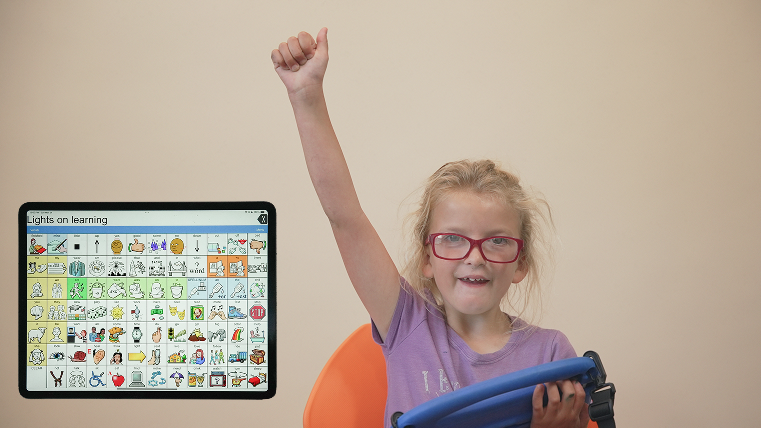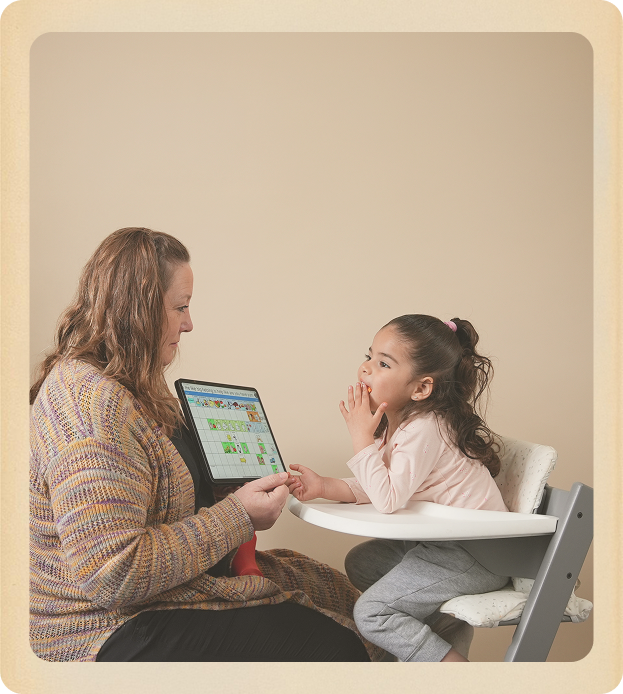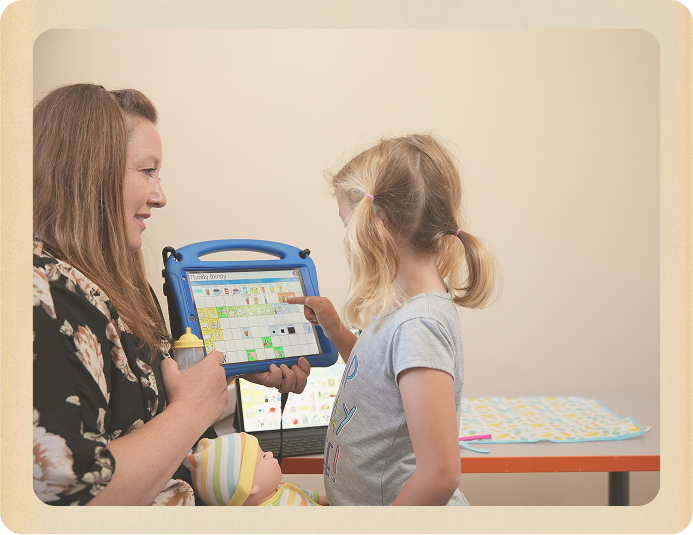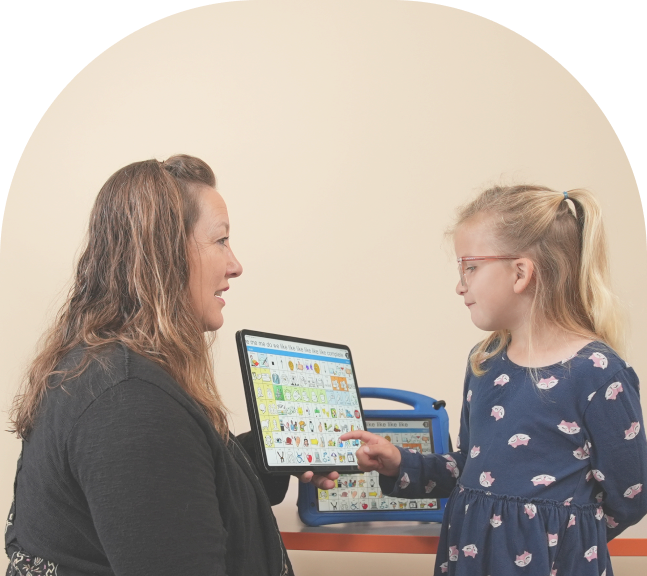One on One services
AAC Therapy
Augmentative and Alternative Communication
Private Sessions
(Available in person in Orcutt, CA or online)
One on One services
AAC Therapy
Augmentative and Alternative Communication
Private Sessions
(Available in person in Orcutt, CA or online)


Expert Augmentative Alternative
Communication Solutions
Children and adults with severe speech language problems may need to find other ways to communicate besides talking. Augmentative Alternative Communication (AAC) is a way to communicate that doesn’t use speech. There are different types of AAC which include no-tech, low tech and high-tech options. It can include sign language, communication boards or speech generating devices. Individuals who need AAC are children who are nonverbal or have a severe motor speech disorder which impacts their intelligibility.
The goal of AAC is to help individuals communicate and connect with others so they can independently communicate their wants, needs and ideas to anyone, anywhere at any time. If a child is having difficulty communicating with their natural voice it is important to consider AAC from an early age.
Typically, we start with sign language, especially if we feel the child will be able to produce intelligible speech with time and therapy.
If the child has a more profound speech language disorder making it difficult for them to use their natural voice even with therapy a speech generated communication device may be necessary. It is important that the child be evaluated using a feature match, so the recommended tools match the child’s ability to use those tools. AAC can involve accessing devices with direct selection using the fingers and hand but can also involve using auditory scanning or eye gaze options.
There are no thinking skills, test scores, prerequisites or other milestones that a child needs to reach before AAC can help! A lot of people wonder if using AAC will stop someone from talking or slow down language development. Research shows that AAC can actually help with speech and language development.


Expert Augmentative Alternative
Communication Solutions
Children and adults with severe speech language problems may need to find other ways to communicate besides talking. Augmentative Alternative Communication (AAC) is a way to communicate that doesn’t use speech. There are different types of AAC which include no-tech, low tech and high-tech options. It can include sign language, communication boards or speech generating devices. Individuals who need AAC are children who are nonverbal or have a severe motor speech disorder which impacts their intelligibility.
The goal of AAC is to help individuals communicate and connect with others so they can independently communicate their wants, needs and ideas to anyone, anywhere at any time. If a child is having difficulty communicating with their natural voice it is important to consider AAC from an early age.
Typically, we start with sign language, especially if we feel the child will be able to produce intelligible speech with time and therapy.

If the child has a more profound speech language disorder making it difficult for them to use their natural voice even with therapy a speech generated communication device may be necessary. It is important that the child be evaluated using a feature match, so the recommended tools match the child’s ability to use those tools. AAC can involve accessing devices with direct selection using the fingers and hand but can also involve using auditory scanning or eye gaze options.
There are no thinking skills, test scores, prerequisites or other milestones that a child needs to reach before AAC can help! A lot of people wonder if using AAC will stop someone from talking or slow down language development. Research shows that AAC can actually help with speech and language development.
Ready to find the perfect AAC
solution for your child?
Schedule a session with us today for a personalized feature match and AAC trial to help unlock your child’s communication potential!

If you need help identifying your child’s unique needs, we offer private speech, language and educational evaluations which include Independent Education Evaluations which is paid by the public school district if approved. Go to Evaluations page.
If you have any other questions, please visit the contact page
For Coaching & Conferences, we provide personalized sessions to help you navigate your child’s learning journey effectively.

